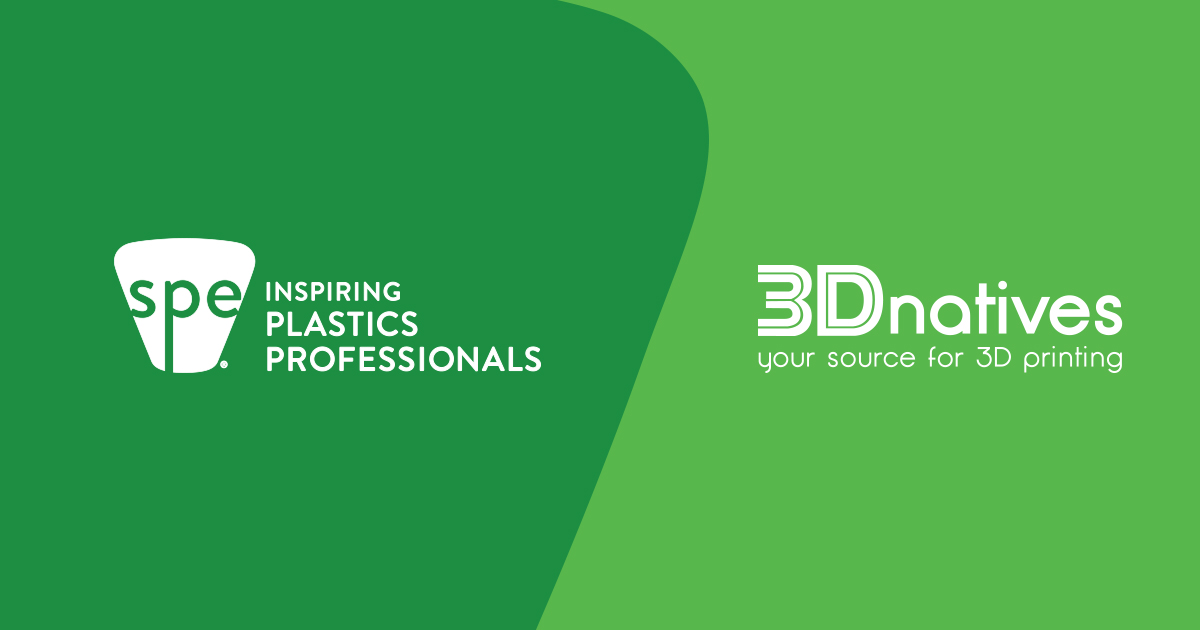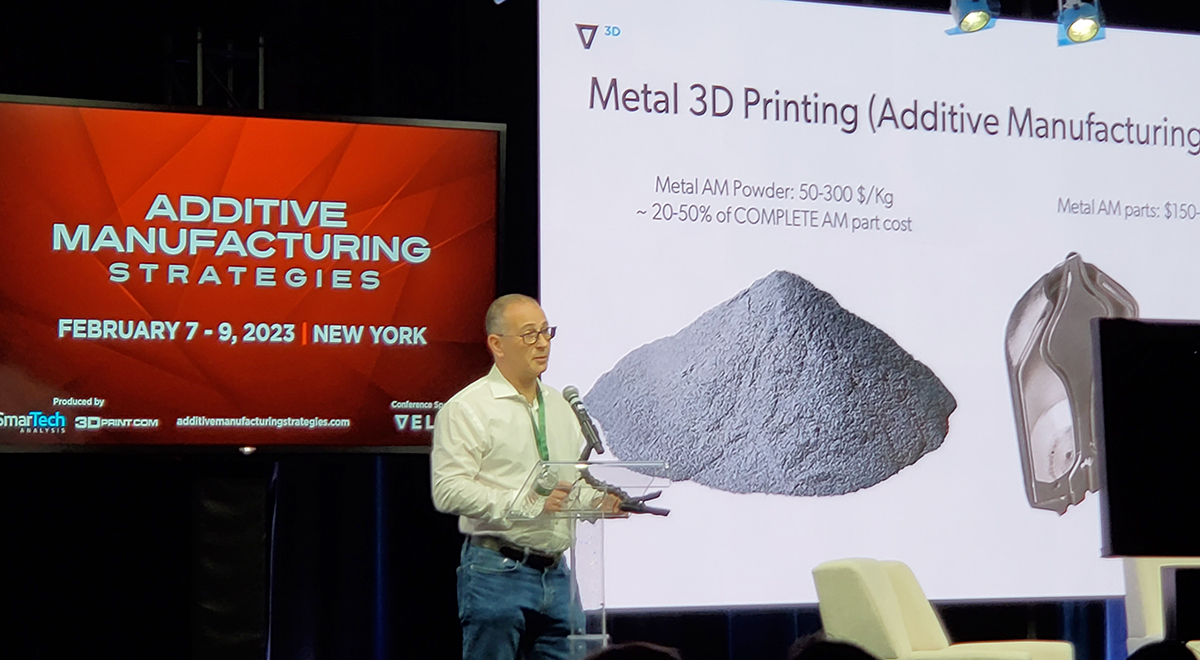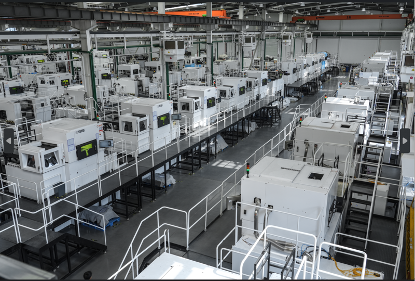While our readers were often drawn to developments in the desktop 3D printing space, the larger additive manufacturing (AM) industry was being shaped and reshaped by the business world. There were a number of stories that came out this year revealing a sector in the midst of massive transition. Much of that transition reflects the integration of 3D printing into mainstream manufacturing. Here are 10 such pieces of news from 2023.
Media Acquisition

The Society of Plastics Engineers (SPE) acquired the French online media platform 3Dnatives, a significant move in terms of AM media, aimed at expanding SPE’s expertise in the segment. Founded in 2013 by Marc Pfohl and Alexandre Martel, 3Dnatives has grown into a leading media platform in the AM sector, offering a variety of services in multiple languages, attracting over 1.2 million monthly visitors. This acquisition, while terms were undisclosed, maintained 3Dnatives’ global offices and was expected to enhance SPE’s global reach and content production in native languages. 3Dnatives also produces events under its “ADDITIV” brand, focusing on AM applications in various sectors. The purchase is a continuation of a larger trend related to activity in the media, analysis, and events space. In addition to 3DR Holdings’ own purchase of SmarTech Analysis, Wohlers Associates was acquired by standards organization ASTM International and Xometry took on digital marketing sourcing provider Thomasnet. Most recently, WTWH Media, known for Design World, EE World Online, and The Robot Report, bought Engineering.com. This was the fourth strategic acquisition for WTWH Media since partnering with Mountaingate Capital, a Colorado-based, growth-focused investment firm.
Dental 3D Printing Shakeup

3D printed dental aligners. Image courtesy of SprintRay.
Align Technology acquired polymer 3D printing company Cubicure GmbH for approximately €79 million. This strategic move enhances Align’s capabilities in direct 3D printing, supporting its growth in the dental 3D printing market, which accounts for a third of the AM sector. Cubicure’s Hot Lithography technology, crucial for the next phase of dental 3D printing, allows for the processing of highly viscous resins to produce durable and temperature-resistant polymers.
This acquisition enables Align to potentially shift from thermoforming aligners on 3D printed models (made using 3D Systems’ stereolithography machines) to direct 3D printing of dental aligners. The acquisition, part of Align’s long-term growth strategy, also prepares it for increased competition and industry shifts, considering the challenges faced by Align, such as declining shipments and revenues in a fluctuating market. News of the purchase impacted 3D Systems (NYSE: DDD) investors, who worried that the dental giant was moving away from the printer manufacturer, thus impacting a significant portion of 3D Systems’ revenues.
In contrast, SmileDirectClub, a direct-to-consumer aligner manufacturer, filed for Chapter 11 bankruptcy in Texas due to challenging financial circumstances. Despite initial growth and a significant presence in the 3D printing space through a partnership with HP (NYSE: HPQ), SmileDirectClub faced a steep decline in revenues, exacerbated by the COVID-19 pandemic and a $63 million legal judgment against them from Align. The company attempted to stabilize through recapitalization and introducing new products, but accumulating debts and the inability to secure third-party financing led to the bankruptcy filing. In December 2023, SmileDirectClub announced the closure of its operations, which could lead to some 60 HP polymer 3D printers flooding the market at a discount.
Stratasys’s Mergerocolypse

The 3D printing industry experienced a significant upheaval with the battle over its most valuable company, Stratasys. This began when Stratasys (Nasdaq: SSYS) announced its intent to merge with Desktop Metal (NYSE: DM), triggering interest from other companies like 3D Systems and Nano Dimension (Nasdaq: NNDM). Nano Dimension, having accumulated over $1 billion in cash, aggressively sought control of Stratasys, leading to legal battles and protective measures such as a “poison pill.” Desktop Metal aimed to merge with Stratasys to expand its technology portfolio. Meanwhile, 3D Systems, a long-standing competitor of Stratasys, proposed its own bid for the company. The situation was underscored by various legal and financial maneuvers from different stakeholders, reflecting the strategic importance of Stratasys in the 3D printing market.
With AM analysts like me wagering over how the drama might play out, the saga ended in a non-deal. Stratasys terminated its planned merger with Desktop Metal, despite approval from Desktop Metal’s shareholders. Stratasys shareholders overwhelmingly voted against the deal, leading to a reassessment of strategic options, including potential mergers, business combinations, or sale of the company. I’m not afraid to admit that I was wrong in covering the story and sure felt confident at the time that I was making my guesses.
Benny Buller Resigns from Velo3D

Velo3D CEO Benny Buller giving the opening keynote at Additive Manufacturing Strategies 2023.
In December, metal 3D printing firm Velo3D (NYSE: VLD) announced the resignation of its CEO and founder, Benny Buller, following a decision by the Board of Directors amid a challenging economic climate for the industry. This change occured as the company experienced significant financial growth but also substantial operational losses, necessitating a strategic review of options including a possible sale, merger, or other business combinations. The board appointed Brad Kreger as Interim CEO, who brings extensive experience in scaling manufacturing operations. Velo3D’s situation is reflective of broader sectoral trends, where other companies are also undergoing leadership changes and exploring strategic transactions. With its critical role in the new space industry and amid growing competition, particularly from Chinese manufacturers, Velo3D’s future steps are being closely watched.
More Private Equity Service Bureau Roll-ups

Fathom rang the opening bell of the NYSE on April 19, 2022. Image courtesy of Fathom via LinkedIn.
Amid economic uncertainties, private equity has continued to demonstrate itself as a pivotal player in the 3D printing industry, particularly in AM service bureau consolidation. Although this trend began to emerge when CORE Industrial Partners purchased FATHOM in 2019 and initiated a roll-up strategy before taking it public, other private equity firms have since followed suit. Similar strategies include: AIP’s acquisition of ADDMAN, and Trilantic North America’s role in guiding Quickparts, Crestview Partners’ backing of SyBrige Technologies, L Squared Capital’s play with ERA Industries, and MiddleGround’s strategy with the purchase of a CNC shop in Canada, CORE itself formed UPTIVE with a separate roll-up, as well. Meanwhile, FATHOM has since faced significant financial trouble, leading CORE to consider taking it private. The influx of private equity investment, growing by 52% year-over-year as of 2022, indicates confidence in the AM sector’s long-term potential. These firms are not only consolidating existing capabilities but also expanding into new AM platforms and sectors, aiming to create well-rounded manufacturing platforms.
Relativity Space’s Not-Quite-Successful 3D Printed Rocket Launch

Relativity Space’s Terran 1 launches from Florida. Image courtesy of Relativity Space.
On March 22, 2023, Relativity Space achieved a significant milestone by semi-successfully launching the world’s first 3D printed rocket, the Terran 1. Despite two previous failed attempts, the 110-foot-tall rocket, made up of 85% 3D printed parts, took off from Cape Canaveral Space Force Station. The launch was a culmination of seven years of development by Relativity Space, a company founded by Blue Origin alumni. Although the rocket did not reach orbit due to a second-stage anomaly, it represented a major advancement for the AM industry, particularly in space applications. Nevertheless, this failure to ignite was seen as a broader failure by some in terms of potentially hindering the use of 3D printing in the space sector. The failure to achieve orbit led to the decision to discontinue the smaller Terran 1 and focus on the development of Terran R, a more advanced, reusable medium-to-heavy lift launch vehicle.
Chinese Metal 3D Printers Move West

BLT’s metal 3D printing facility. Image courtesy of BLT.
2023 also saw numerous manufacturers of metal laser powder bed fusion (LPBF) 3D printers from China expand into Western markets. While this trend had already begun in previous years with the establishment of sites in the U.S. and Germany by Farsoon and EPlus3D, additional companies, including Bright Laser Technologies (BLT) and HBD3D, made their presence known at all of the major trade shows outside of Asia, such as RAPID + TCT and formnext. Moreover, Farsoon, EPlus3D, and BLT all took the Laser Wars taking place in the LPBF segment to new levels. As Nikon SLM Solutions has made significant progress with its 12-laser NXG XII 3D printer, these Chinese firms have upped the number of lasers up to 26 and counting.
GM Buys Tesla’s Sand 3D Printing Provider for Gigacasting

3D printed sand cores made for BMW using voxeljet technology.
General Motors (GM) strategically acquired Tooling & Equipment International (TEI), a key provider of gigacasting technology used by Tesla. Gigacasting, a process developed by Tesla, involves casting large automotive parts, like vehicle underbodies, in a single piece using large “Giga Presses.” This method, crucially reliant on 3D printed sand molds provided by TEI, aims to streamline vehicle manufacturing by reducing the number of parts and joints, thereby enhancing efficiency, safety, and structural integrity. Other automotive giants like BMW and Toyota are also utilizing this technology for various components, indicating a trend towards gigacasting as a key manufacturing strategy in the EV sector. This development highlights the growing importance of large-scale sand 3D printing in automotive manufacturing.
Apple to Use Metal 3D Printing for Apple Watch Ultra

Apple Inc., the world’s largest tech company, is experimenting with binder jet 3D printing to fabricate steel chassis for its future smartwatches. The exact source of Apple’s binder jet technology remains speculative. Possible suppliers include Desktop Metal, Markforged, GE, EasyMFG in China, or HP’s Metal Jet S100 platform, considering Berkshire Hathaway’s investments in both Apple and HP.
Additionally, the next version of the Apple Watch Ultra is expected to feature mechanical titanium parts produced using LPBF, according to analyst Ming-Chi Kuo. Apple’s use of Chinese platforms for this purpose, notably from companies like Farsoon and BLT, is particularly interesting given the ongoing trend of diversifying manufacturing operations from China.
Biden Backs Advanced Manufacturing

Throughout 2023, the Biden Administration increased its support for advanced manufacturing even further, announcing a series of major investments and initiatives to boost the U.S. advanced manufacturing sector. Key highlights include the establishment of the White House Council on Supply Chain Resilience, significant funding for battery and semiconductor manufacturing, and the launch of AM Forward Florida, a pilot program under the national AM Forward initiative.
These efforts aim to enhance the domestic production of critical technologies, such as advanced batteries, semiconductors, and 3D printed components for aerospace and defense applications. The administration is focusing on strengthening the U.S. defense industrial base, promoting reshoring, and accelerating the adoption of AM technologies to ensure a more resilient and innovative manufacturing sector. This strategic push aligns with national security objectives and aims to foster economic growth, job creation, and technological leadership in the global market.

Chuck Hull receives National Medal of Technology and Innovation 2023 from President Biden. Image courtesy of C-SPAN.
Even when AM wasn’t explicitly mentioned in relation to some of these initiatives—though it frequently was—3D printing almost acted as the backdrop for them. As discussed in Additive Manufacturing Research’s first ever intelligence report on the 3D printing market for defense, “Additive Manufacturing for Military and Defense,” the U.S. Department of Defense (DoD) was estimated to spend a total of $300 million directly on AM in 2023. Moreover, this spending is expected to reach $1.8 billion by 2032. Perhaps signifying the overall trend, the National Medal of Technology and Innovation was awarded to 3D printing inventor Chuck Hull, founder of 3D Systems, by President Biden in October of this year.
Subscribe to Our Email Newsletter
Stay up-to-date on all the latest news from the 3D printing industry and receive information and offers from third party vendors.
You May Also Like
Further Understanding of 3D Printing Design at ADDITIV Design World
ADDITIV is back once again! This time, the virtual platform for additive manufacturing will be holding the first-ever edition of ADDITIV Design World on May 23rd from 9:00 AM –...
3D Printer Maker EVO-tech Reborn as NEVO3D — Once More With Feeling
EVO-tech was a 3D printing service and original equipment manufacturer established in 2013 and based in Schörfling am Attersee, Austria. The company produced high-quality material extrusion systems featuring linear bearings,...
3D Systems Brings 3D Printed PEEK Cranial Implant to the U.S. with FDA Clearance
For more than 10 years, 3D Systems (NYSE:DDD) has worked hand-in-hand with surgeons to plan over 150,000 patient-specific cases, and develop more than two million instruments and implants from its...
CDFAM Returns to Berlin for Second Annual Symposium
The second CDFAM Computational Design Symposium is scheduled for May 7-8, 2024, in Berlin, and will convene leading experts in computational design across all scales. Building upon the first event...































